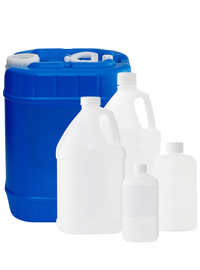Sodium Chloride
Sodium Chloride
NaCl Commonly Known As Salt
What is Sodium Chloride?
Sodium Chloride is commonly known as Salt. It is an inorganic compound and an electrolyte, with the chemical formula NaCl, an essential requirement for all life. It is found throughout the earth in natural underground deposits as mineral halite (rock salt), and as mixed evaporates in saline lakes, it is also the most significant component of dissolved solids found in seawater. Salt is the second chemical compound after water identified and the only stone eaten by humans.
Sodium Chloride exists naturally in cubic, crystalline form and, in its pure state, is colorless and odorless, but depending on its gradation and commercialization, salt can be white, gray, reddish, or even brownish as well. The color can be attributed to the impurities present, either occluded or on the surface of the crystals. Salt is soluble in polar solvents and insoluble in nonpolar types of solvents.
Sodium Chloride produced commercially can exist as crystals in various sizes ranging from fine granules of powder to compressed pellets or blocks. Salt production includes three production types: Solution mining: the display of dry, crystalline sodium chloride by solution extraction of salt from under-ground deposits using water, followed by evaporation of the brine; the dry mining method of extracting the mineral halite from beneath the ground, and by solar salt harvesting.
Many grades of salt are available for purchase, and purity levels for these grades vary from as low as 95% for some rock salts to a high purity of 99% for purified evaporated-granulated treated salt.
Major uses and applications
Over 14,000 different uses for salt have been identified. However, the salt industry generally classifies salt benefits by the six principal use categories: food use and processing, agriculture, highway, water conditioning, chemical, and industry uses.
Food industry
When Sodium Chloride is added to food, it enhances the flavor and makes bland-tasting foods more palatable. Sodium Chloride not only flavors food during cooking and food processing but also performs as a food preservative, color developer, binding agent, texturizer, and fermentation-control agent. Salt aids color development in processed meats like ham, hot dogs, and sausages. In the cheese industry, salt controls fermentation, texture, and flavor. In foods, salt brine dehydrates bacterial cells, alters osmotic pressure, and inhibits bacterial growth and food spoilage.
Agriculture
Sodium Chloride is necessary by all animals for normal metabolism; muscle contraction and an average heart rate also require sodium presence. Salt supplementation is needed and a critical part of a nutritionally balanced diet for animals. A lack of sufficient levels of sodium intake can affect animal health through loss of appetite and weight.
Highway
Rock salt maintains traffic safety and mobility during snow and ice conditions in snow belt regions worldwide. Sodium Chloride melts ice at temperatures down to its melting point of -21.12®C.
Water conditioning
Well water and many public drinking water supplies in different areas contain elevated calcium, magnesium, and other minerals. Calcium and magnesium salts, as well as chlorides and carbonates, reduce the sudsing action of soaps and detergents.
Chemical Industry
The total salt distributed by producers in the United States was salt in brine produced and used by chemical manufacturers to produce chlorine and caustic soda. The pulp and paper industry has used chlorine and caustic soda (sodium hydroxide) in multistage bleaching.
Industry uses
Sodium Chloride has thousands of industries that utilize salt as a raw material. The major industries include textile and dyeing, where salt is used to fix dyes and to standardize dye batches; metal processing, such as aluminum refining, where salt is used to remove impurities; rubber manufacturing to separate the rubber from latex; detergent production, where salt is used as a filler; pigment manufacture, as a grinding agent; ceramics manufacture, where salt acts to vitrify heated clays; soap making, where salt separates glycerol from water; oil and gas drilling, where salt is used to produce a drilling mud that prevents widening of boreholes, inhibits fermentation, and increases mud density; pharmaceuticals, where salt is used for tablet and caplet polishing, the production of intravenous saline solutions and for manufacturing hemodialysis solutions used for kidney machines; and in animal hide processing and leather tanning, where salt is used to cure, preserve, and tan hides.
Common Uses and Applications
- Flavor enhancer
- Food preservative
- Color developer
- Biding agent
- Texturizer
- Fermentation control agent
- Ice melting agent
- Water conditioning reagent
- Raw agent
- Impurities removal
- Filler agent
- Grinding agent
- Soap ingredient
- Saline solution ingredient
Industries
-
Food Processing
- Textile And Dyeing
- Metal Processing
- Rubber Manufacturing
- Detergent And Soap
- Pigment And Ceramics
- Oil And Gas
- Pharmaceutical
- Agriculture
- Chemical
- Plastic And Paper
- Glass
- Polyester










